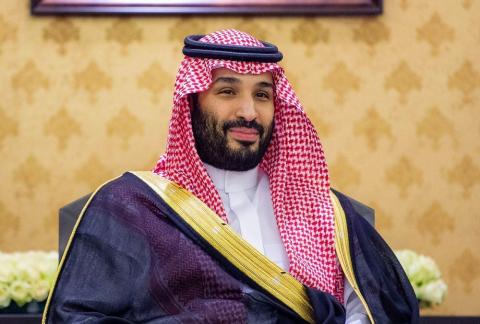
Raul played a key behind the scenes role in obtaining support from the Soviet Union following the revolution’s triumph in 1959.
Frugal by nature and less expressive than his brother, Raul Castro slowly began to introduce reforms that opened Cuba to foreign investment.
Havana: Raul Castro, who stepped down Thursday as Cuba’s president, lived most of his life in the shadow of his iconic brother Fidel. But after taking over in 2006 he steered the island on a path of radical reform as only he could do.
Now 86, his departure ends the Castro brothers’ six-decade grip on power.
Always a good soldier, Raul Castro knew that his place was behind his older brother. “Fidel is irreplaceable, unless we all replace him together,” he said upon temporarily stepping in when his brother fell ill 12 years ago.
A skilled negotiator, Raul played a key behind the scenes role in obtaining support from the Soviet Union following the revolution’s triumph in 1959.
But even before that he became famous for snatching a gun off a soldier to set free his comrades after a botched raid on Moncada barracks in 1953.
When his brother seized power some six years later, Raul Castro became the second-in-command.
For him, as the youngest of the family’s seven children, it had always been about his big brother Fidel.
When he was just four, Raul asked his mother if he could leave their small town to be with nine-year-old Fidel, who was at a school in the city of Santiago de Cuba. She refused.
“He cried, fought, and insisted that she let him go,” recalled Fidel Castro in “My Life: A Spoken Autobiography,” a series of interviews published in 2006.
“They had a political partnership,” said Cuban political scientist Arturo Lopez Levy. “Fidel didn’t have that sort of relationship with any of his siblings. Raul became his number two when other revolutionaries (who outranked him) died.”
After the revolution that ousted dictator Fulgencio Batista in 1959, Raul set about strengthening the two main pillars of the revolution: the Communist Party and the Revolutionary Armed Forces (FAR).
As defense minister Raul led Cuba’s military for 50 years, transforming the idealistic rebels into an efficient military force. The FAR, which at its height had 300,000 troops, went on to play a central role in Cuba’s economy.
“The relationship was one of a leader and his lieutenant,” said Lopez-Levy, co-author of “Raul Castro and the New Cuba: A Close-Up View of Change.”
“Raul Castro became the one who turned Fidel’s dreams into reality. He was the institutional architect of the revolution,” Lopez-Levy said.
Raul formally took over as president in 2008, inheriting a country that had endured years of a US blockade and an economic crisis following the disintegration of its patron, the Soviet Union.
Frugal by nature and less expressive than his brother, Raul Castro slowly began to introduce reforms that opened Cuba to foreign investment, allowed private businesses, authorized the buying and selling of property, and eased restrictions on Cubans traveling abroad.
In late 2014 he stunned the world by reestablishing ties with Washington after a break of more than 50 years.
In 2016 he welcomed US President Barack Obama, and helped the Colombian government and FARC rebels reach a landmark peace deal.
Later that year his brother Fidel died.
In 2017 Raul Castro ratified an economic plan “to change everything that needs to be changed” — a catchphrase coined by Fidel to define “revolution.”
With Donald Trump’s arrival in the White House and the renewal of tough rhetoric against Havana, Raul barricaded himself within the all-powerful Communist Party of Cuba where he will continue to hold a pivotal role, serving as guardian to his successor.
A family man and father-of-three, Raul was married for 48 years to Vilma Espin, his comrade in arms who died in 2007.
One of his children is lawmaker and gay rights activist Mariela Castro, while another is Col. Alejandro Castro, a major power player. He has nine grandchildren and one great-granddaughter.
Whether wearing military fatigues or a suit and traditional button-down guayabera shirt, Raul enjoys the absolute loyalty of the military and the former revolutionaries.
Nikolai Leonov, a friend and former head of the KGB’s Cuba department, says the outgoing president loves hiking and joking around.
But years earlier it was Raul Castro who gave the order to shoot Batista loyalists.
“I couldn’t appear to the enemy as a man with a charitable soul,” he told the Sol de Mexico daily in 1993.
And in 1989, he backed a ruling to put prominent Cuban general Arnaldo Ochoa and three others in front of a firing squad for drug trafficking.
In a shock move in 2009, he ousted two leading figures from the circle of power — Vice President Carlos Lage and Foreign Minister Felipe Perez Roque — on charges of “ambition” and questionable conduct.
Although he freed dozens of opposition figures under a deal mediated by the Catholic church, arbitrary arrests increased under his watch, along with the prosecution of dissidents for common crimes, opposition leaders say.
Ever looking ahead, he has already prepared the site where he will be buried — a stone alcove on a mountainside near the eastern city of Santiago de Cuba where his beloved wife was laid to rest.












